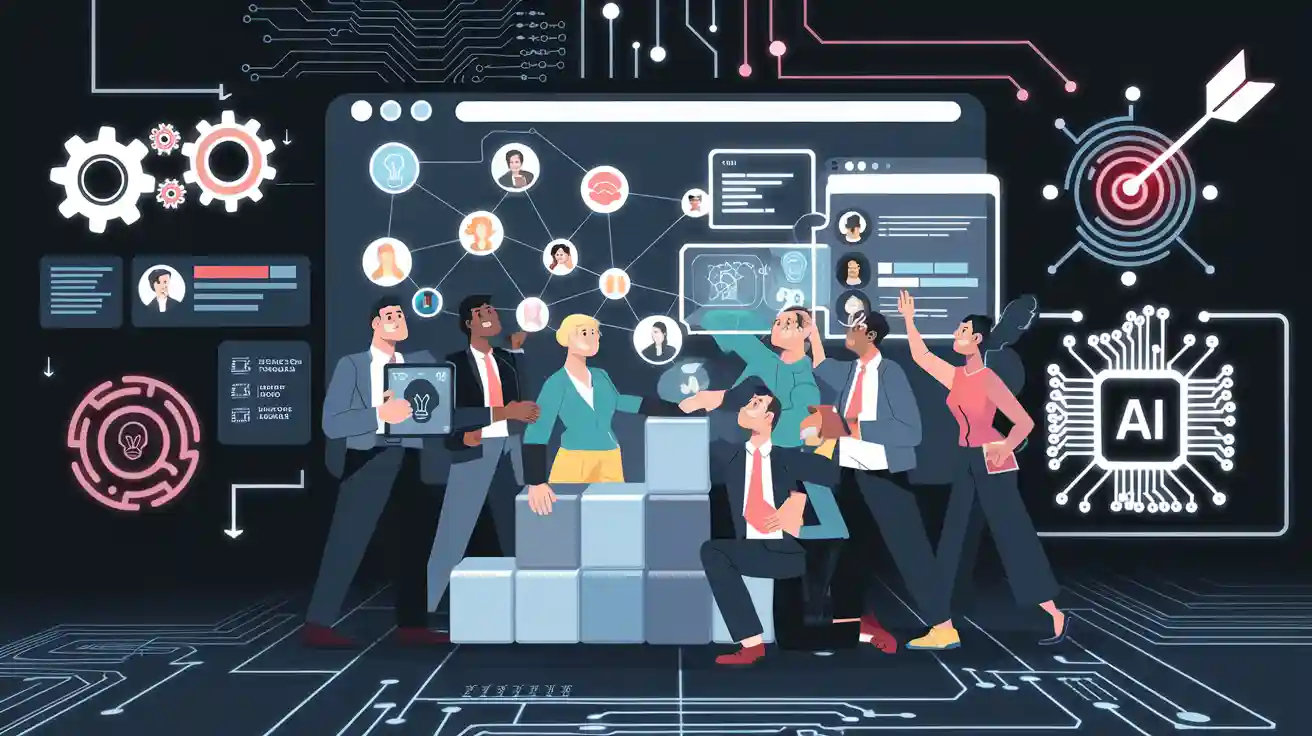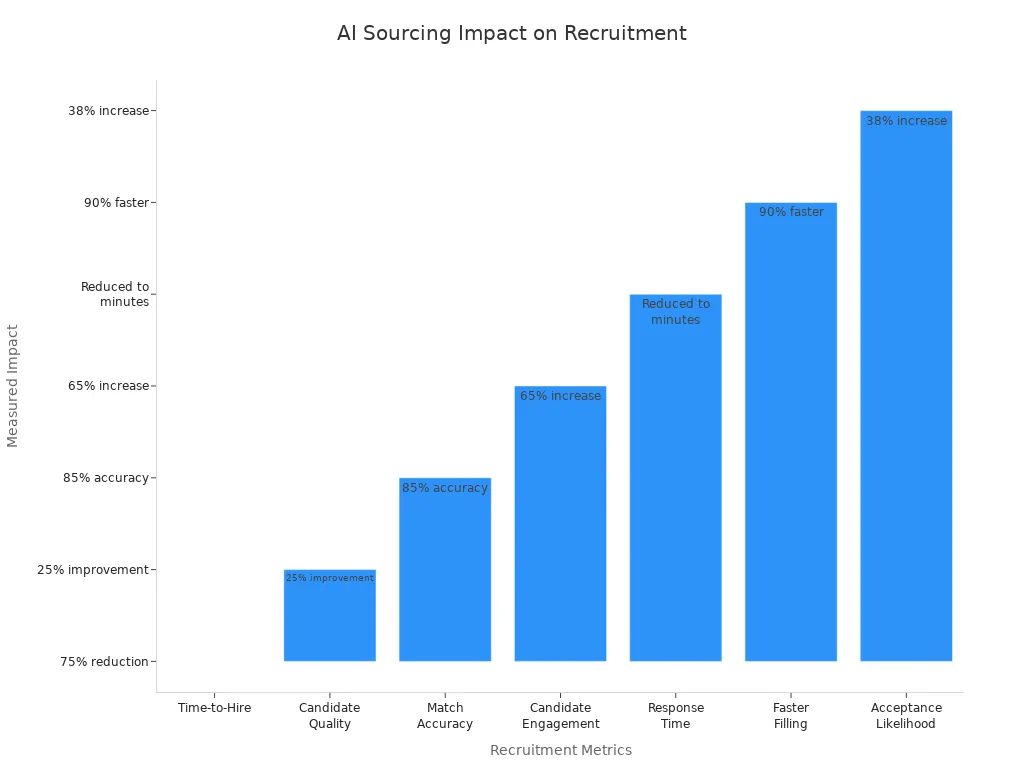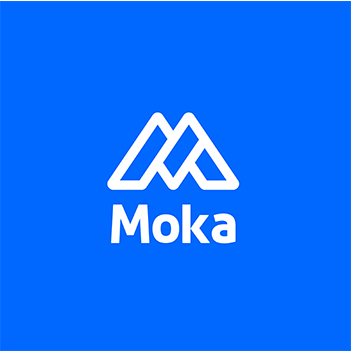10 innovative recruitment ideas to transform your hiring in 2025

Recruitment in 2025 needs new ideas and flexibility. Companies now use innovative-recruitment-ideas to keep up with fast changes in hiring. Recent facts show some important trends for the future:
AI-powered recruitment cuts hiring time by 40%. It also helps companies hire more different people.
Skills-based hiring is now used by 83% of companies. This happens because of new ideas and not enough workers.
Data-driven recruitment makes it twice as likely to get better hires.
Companies use innovative-recruitment-ideas and technology to change how they hire. They also help workers move up and make the hiring process better for candidates. Leaders look at their plans and use new ideas to build strong teams.
Innovative-Recruitment-Ideas
AI-Powered Sourcing
AI-powered sourcing is a new way to find workers. Top companies use smart ideas to get the best people. Volkswagen France put QR codes on car parts. This helped them find skilled mechanics. Spotify made playlists that told people about jobs. These ideas make recruiting feel special and reach more people.
AI sourcing tools like Recruiterflow, Fetcher, and hireEZ do boring tasks for recruiters. These tools help recruiters save 3 to 5 hours every day. They also make hiring faster by 41%. Unilever saved half their hiring money. They also made hiring take only four weeks instead of four months. AI helps stop bias by not looking at things like age or gender. It can also send messages to candidates without help from people.
Metric | AI-Powered Sourcing Impact |
|---|---|
Time-to-Hire | Up to 40% faster; Unilever made it 75% faster |
Candidate Quality | 25% better when AI and recruiters work together |
Match Accuracy | 85% with AI job matching, 60% with old ways |
Candidate Engagement | 65% higher with AI making messages personal |
Response Time | AI makes replies in minutes, not days |

Tip: Recruiters should set clear goals before using AI tools. Pick tools that work with what you already use. Start with easy jobs and add more as you learn.
Automated Screening
Automated screening uses AI to check resumes and test skills. It looks at job skills and hides personal info. This helps stop bias and helps more people get a fair chance. AI screening tools use the same rules for everyone. They score people with data and hide names and photos.
It cuts down time for setting up interviews by 60%. Time-to-hire is 40% less.
Recruiters can spend more time on important work. Automation does the boring stuff.
To use automated screening, companies should:
Decide what features are most important.
Make sure tools work with HR systems.
Test tools with real users to see if they are easy.
Plan how to add tools with help from IT.
Give training and help as people learn.
Set goals and ask for feedback.
Check and make things better often.
Note: Automated screening makes things faster for candidates. It helps them hear back sooner and makes it more likely they will take the job.
Skills-Based Hiring
Skills-based hiring is now changing how companies find workers in 2025. Many businesses care more about what people can do than their degrees. About 65% of employers use skills-based hiring for entry-level jobs. This way, companies can look at more people and find the right skills. Old rules about degrees leave out many good candidates. In 2024, over half of U.S. job ads do not ask for a degree. Big companies like IBM, Google, and Deloitte use skills-based hiring to get better workers and results.
Skills Assessments
Skills assessments help companies see what people can really do. These tests check important skills, problem-solving, and how well people adapt. Companies that use cognitive tests have seen fewer people quit, up to 41% less. Accenture found that people who solve problems well stay 30% longer. Google uses these tests and keeps new workers 10% more. Skills assessments also help stop bias and help companies hire more different people.
Tip: Try using questions about real work and tests for the job to see how people solve problems.
Skills assessments:
Check main skills and how people adapt.
Show job performance better than old interviews.
Help keep workers longer and find better fits.
Project-Based Evaluation
Project-based evaluation lets people show their skills with real tasks. In 2022, a study said 78% of companies using project tasks saw better new hires. Tech companies like project tasks more than old tests. Google and IBM use project boot camps to find top people and keep them longer. GitHub uses group coding projects to test teamwork and real skills. Companies using these ways say candidate quality goes up by 20%.
Common project-based ways:
Work samples like real job tasks.
Case studies to solve problems.
Presentations to show skills and talk well.
Skills-based hiring and project-based tasks help companies find the best people. These ways help get more different workers, stop bias, and make business better.
Candidate Experience
Personalized Communication
Recruitment teams know that talking to candidates in a personal way is important. Companies use data to make messages fit each person. This helps job seekers trust the company. Recruiters group candidates by what they can do and what they like. They send updates that matter to each group by email, text, or social media. This makes candidates feel special and keeps them interested in the hiring process.
Many companies use AI-powered platforms to help with this. Recruiters send quick messages when someone signs up for an event or saves a job. They also share blogs or videos that match what each person likes. Sometimes, recruiters call people or invite them to small group events. These things help build real friendships. When companies do this, more people say yes to job offers and think well of the company.
78% of candidates think their experience shows how much a company cares. Over 80% say a good experience can change their mind about a job or company.
Streamlined Application
A streamlined application process makes it easy for people to apply. Companies use resume parsing and smart forms so people do not have to repeat answers. Clear steps and easy-to-use pages help people finish fast. Mobile-friendly designs let people apply on any device.
Some helpful features are:
Progress bars that show how much is left.
Save-and-return so people can finish later.
AI chatbots that answer questions and help applicants.
Accessibility tools like easy-to-read fonts and alt-text for pictures.
Recruitment teams use applicant tracking systems to keep messages clear and regular. Fast and open processes make companies look better and help more people accept job offers. For example, Qonto got 86% of people to say yes to job offers by making the process easy and quick.
Aspect | Impact on Offer Acceptance and Employer Reputation |
|---|---|
Transparency | Makes people more patient and likely to accept |
Recruiting Speed | Fewer people quit and more accept jobs |
Employer Brand | Attracts good workers and helps more people say yes |
Candidate Engagement | Helps people picture their job and makes them want to accept |
Recruitment Technology
Data Analytics
Data analytics is changing how companies hire in 2025. Recruiters use dashboards to watch open jobs and see who applies. These dashboards help teams make fast choices and fill jobs quickly. Predictive analytics shows which people might do well and stay longer. This helps companies plan ahead and keep workers longer.
Contribution to Improving Recruitment Outcomes | |
|---|---|
Predictive Analytics | Anticipates hiring needs and reduces turnover |
Diversity, Equity & Inclusion | Tracks diversity and reduces bias |
Candidate Experience | Monitors engagement and improves satisfaction |
Client Relationships | Builds trust and improves repeat business |
Recruitment technology helps companies check for diversity. It looks at job ads to see if the words are fair. It also checks if everyone gets a fair chance. Recruiters use feedback from candidates to make things better. This makes people more likely to say yes to job offers and trust the company. Data analytics tools show what works and what needs to change. Companies using these tools build stronger teams and save money.
Tip: Start with easy numbers like time-to-fill and offer acceptance rates. Use these numbers to find and fix problems fast.
Applicant Tracking Systems
Applicant Tracking Systems (ATS) are important in recruitment technology. The best ATSs in 2025 are MokaHR, BambooHR, JobDiva, and Zoho Recruit. These systems help recruiters with every step, from posting jobs to bringing new people in.
Key Usability Features | Ideal For | |
|---|---|---|
MokaHR | Structured hiring, interview planning | Midsized to large teams |
BambooHR | Seamless hiring-to-onboarding | Mid-sized companies |
JobDiva | AI-driven resume matching | Talent sourcing focused teams |
Zoho Recruit | Customizable workflows, multi-channel | Enterprise-level recruiting |
Fast, easy, all-in-one recruiting tool | Small and medium businesses |
Modern ATS let recruiters text right away and onboard new hires fast. They use smart tools to check resumes and keep people interested. AI in ATS matches people to jobs faster and better. Chatbots answer questions and set up interviews, making things easy for everyone. Mobile-first design lets people apply on any device, which is important since most people use phones.
Recruitment technology makes hiring easier, faster, and fairer. Companies using these tools get better hires and happier new workers.
Employer Branding
Social Media Presence
Employer branding is how people see a company. Companies use social media to find good workers and share what they believe in. LinkedIn, Instagram, TikTok, and Facebook help recruiters talk to people where they hang out. Surveys say 86% of job seekers use social media to look for jobs. These sites let companies post videos, Q&As, and polls to show real stories and daily work. Recruiters can make job ads fit each site. They use hashtags on X or short TikTok videos to get more attention.
A strong brand on social media brings in top talent who want to work for a company with clear values. Many candidates look at a company’s online pages before they apply. About 75% of people think about employer branding before sending an application. When companies share real stories, they build trust and help people see if they fit in. This can make the quality of applicants go up by 50%. Fun and smart ideas on social media help companies stand out from others.
Tip: Use the sites where your best candidates spend time. Share posts that show what makes your company special.
Culture Showcasing
Companies get great workers by showing what makes their culture different. They share stories from workers, day-in-the-life videos, and success stories to show what work is really like. Candidates want to know how a company helps people grow, supports diversity, and cares about well-being. Companies can:
Share stories about workers’ wins and awards.
Let candidates talk to workers or join online office tours.
Show team events, community work, and flexible work rules.
A clear Employee Value Proposition (EVP) helps people know what the company gives them. Being real in EVP builds trust and keeps workers happy. Companies that show their culture on websites and social media get workers who share their values. This means better hires and fewer people leaving. Employer branding also helps companies keep good relationships with workers and candidates, making a loyal team.
Note: Leaders should show company values by talking openly and joining in. This helps both workers and new hires feel inspired.
Diversity and Inclusion

Blind Hiring
Blind hiring is a strong way to build diverse teams. Companies use it to hide names, ages, and other details on resumes. Recruiters look at skills and experience, not where someone comes from. This helps people from all backgrounds get a fair shot. Unilever hired 50% more women for manager jobs after using blind hiring. Salesforce hired 35% more people from underrepresented groups in one year with this method.
Blind hiring helps stop bias, especially early in hiring. It works best with other steps like set interview questions and mixed hiring panels. Many companies teach staff to notice bias and use systems to hide personal info. These steps help companies find great talent, including gen z who care about fairness. Blind hiring cannot fix all bias, but it helps make hiring more fair for everyone.
Blind hiring gives everyone a chance and helps companies build teams that look like the real world. Gen z wants fairness and honesty in every part of hiring.
Inclusive Descriptions
Writing job descriptions that include everyone helps companies find great workers. Using words that are not just for men or women brings in more people. Gen z and top talent want clear, friendly words that show a company cares about diversity. Taking out hard degree rules and using easy words makes jobs open to more people. Companies also talk about flexible benefits and remote work to get gen z interested.
Best Practice | Benefit for Recruitment |
|---|---|
Attracts all genders | |
Easier for everyone to understand | |
Focus on skills, not degrees | Welcomes diverse backgrounds |
Appeals to gen z and top talent | |
DEI statements in postings | Builds trust with diverse applicants |
Companies that check job descriptions often and ask for ideas keep their words fresh and open to all. This helps bring in top talent and makes everyone feel like they belong.
Internal Mobility
Internal mobility helps companies keep their best workers. It also helps build a stronger team. When companies fill jobs from inside, they save time and money. Workers feel happy because they see ways to grow. This makes them want to stay and learn new things. Companies can find skilled people who did not apply for new jobs before.
Talent Marketplaces
Talent marketplaces use technology to match workers with new jobs or projects. Leaders can see all the skills in the company. They can move people to where they are needed fast. This helps companies hire faster and take fewer risks. Workers get more chances to grow by joining new teams or projects. This helps people share what they know and work together.
Talent marketplaces:
Help workers learn new skills with real projects and mentors.
Make workers happier by showing them how to grow.
Give everyone a fair chance at new jobs.
Help find hidden skills in the company.
Benefit | Explanation |
|---|---|
Higher Retention | Workers see ways to grow and stay longer. |
Faster Internal Hiring | Leaders fill jobs fast with people they know. |
Better Succession Planning | Companies find future leaders early. |
Stronger Culture | Being open and fair builds trust and teamwork. |
Mentorship Programs
Mentorship programs help workers move up by giving them guides. These programs help workers feel sure of themselves and learn new things. They also help workers see what jobs they can try next. When mentoring is planned well, more workers get promoted and feel happy at work. For example, a tech company saw over 70% of mentees become leaders after mentoring. In healthcare, mentoring helped nurses get better at their jobs and move up.
Mentoring also helps find hidden talent by giving everyone a chance. AI can match workers with the right mentors and set clear goals. Companies check how things are going and ask for feedback to make programs better. When workers feel supported, they stay longer and help the company do well.
Virtual Onboarding
Virtual onboarding is changing how companies welcome new workers in 2025. This way uses technology to help new hires join from anywhere. Digital tools help new employees feel part of the team and ready for work. Virtual onboarding has many good points over old ways:
Helps workers stay longer by making them feel loyal.
Makes learning fun with programs that get people involved.
Gives easy access to things workers need to do their jobs.
Lets workers finish steps when it works best for them.
Saves money because there is no need for big meeting spaces or paper.
Makes learning faster with online quizzes and practice games.
Uses new tech like video calls and teamwork apps.
Only 12% of workers say onboarding is great, but good onboarding makes people happier at work. Companies like Buffer and GitLab use checklists and mentors to help new workers do well.
VR Simulations
Virtual Reality (VR) simulations are changing how people learn at new jobs. Walmart uses VR to put new workers in real-life work scenes, like busy stores or helping customers. This training helps workers feel sure of themselves and stay longer. The U.S. Navy uses VR to teach hard jobs like steering ships and fighting fires, so trainees do better. UPS uses VR to teach drivers safe driving and planning routes, which means fewer crashes.
VR onboarding has many good sides:
Gives the same training to workers who are far away.
Cuts down on training time and costs by not needing travel or paper.
Checks how workers are doing with tests and reports.
Helps teams feel close by showing real work situations.
Companies work with VR experts to make special training for new workers. These lessons help new hires learn quickly and feel like part of the group, even if they are far away.
Interactive Training
Interactive training helps new remote workers stay interested and want to learn. Companies use things like quizzes, group talks, and games to make learning fun and useful. Microlearning splits lessons into short parts, so workers can learn when they have time. Learning Management Systems (LMS) are places online where workers can find lessons, see how they are doing, and join live classes.
Cool tools like AR and VR give hands-on practice for hard skills and showing products. AI changes lessons to fit each worker and gives quick feedback. Mobile courses let workers learn anytime, even without the internet.
Tip: Using interactive training and VR helps new workers feel part of the team, learn fast, and start working well sooner.
Effective Recruiting Strategies
Employee Referrals
Employee referral programs are one of the best ways to build strong teams. These programs use workers’ friends and contacts to find good people. Companies that use employee recruitment strategies like referrals hire faster and keep workers longer. New hires from referrals also start their jobs better. If someone is referred, they have a 40% chance to get an interview. Others only have a 10% chance. Referred people are four times more likely to get hired. More of them stay after one year—46% compared to 33% of others.
Referral programs help companies save about $3,000 for each new worker. Referrals are only 7% of all people who apply, but they make up 40% of new hires. Workers who refer friends feel more involved at work. This helps turnover drop by 20%. These proven recruitment strategies make people happier and help everyone trust each other.
To make a good referral program, companies should:
Give clear rewards when someone refers a good worker.
Make it easy and open for everyone to use.
Share news about jobs that are open.
Thank workers who bring in great people.
Tip: Ask everyone to join in and celebrate when someone’s referral works out. This keeps people excited to help.
Proactive Workforce Planning
Proactive workforce planning is a big part of good recruiting. Many leaders worry about not having enough workers in the future. But only 15% of companies use this talent acquisition strategy. Planning ahead helps companies match workers with what the business needs. It uses supply and demand checks, looking at different situations, and finding skill gaps.
A six-step plan for workforce planning is:
Set business goals.
Look at the workers you have now.
Guess what workers you will need later.
Find out what skills are missing.
Make plans for who will take over jobs.
Use technology and AI to help make choices.
Groups like Mayo Clinic and UC Berkeley use these steps to plan ahead and fix skill gaps. Planning early helps companies grow, save money, and change leaders easily. Companies that use these effective recruitment strategies do better when things change.
Recruitment Marketing
Recruitment marketing is now a big part of hiring. Companies use it to find great workers and show why their company is special. These ideas help companies get noticed when many others are hiring too. They also help bring in people before jobs are even open.
Digital Campaigns
Digital campaigns are very important in recruitment marketing. Companies use ads on social media, emails, and job posts to reach the right people. These campaigns show what makes the company different. They also talk about open jobs and what it is like to work there. Recruiters use tools to see how well the campaigns work. This helps them change their plans to get better results.
A simple plan for digital campaigns has these steps: Set clear goals for each campaign. Pick the best places to share your message. Make fun things like videos, pictures, or stories from workers. Check how many people click, apply, or get hired.
Campaign Element | Purpose | Example |
|---|---|---|
Social Media Ads | Reach passive candidates | LinkedIn, Instagram |
Email Newsletters | Nurture talent pools | Monthly updates |
Job Post Boosting | Increase job ad visibility | Sponsored posts |
Tip: Use digital campaigns with other ways to hire. This helps you always have people ready to join your team.
Live Q&A Sessions
Live Q&A sessions let people talk to recruiters and managers. These happen on LinkedIn Live, YouTube, or company websites. People can ask about jobs, the company, and how to grow. Recruiters answer right away. This helps people trust the company and see that it is honest.
Live Q&A sessions make hiring feel open and friendly. They help companies share what they believe and answer questions many people have. Many companies use these sessions as part of their hiring plans.
Some good things about live Q&A sessions are: People get real answers to their questions. Recruiters learn what job seekers care about most. Companies show they want to talk and listen.
Recruitment marketing works best with other hiring ideas. Digital campaigns and live Q&A sessions help companies find, interest, and hire the best people.
Using innovative-recruitment-ideas in 2025 helps companies get better teams and hire well. Recruitment technology helps people make good choices and saves time. Leaders need to look at what they do now and pick the best new ideas for their company. It is smart to try one or two changes first. This way, teams can see what works and fix things fast. Companies that update how they hire will get the best workers and do well when things change.
FAQ
What is the main benefit of using AI in recruitment?
AI lets recruiters find good candidates much faster. It looks at resumes and matches people’s skills to jobs. AI also helps stop unfair choices. Teams save time and can talk more with job seekers.
How can companies improve candidate experience?
Companies should talk clearly and make applying simple. Giving updates and fast answers helps candidates feel important. Many teams use online events to meet job seekers.
Why is skills-based hiring important in 2025?
Skills-based hiring means companies care about what people can do. It lets more people try for jobs and helps find the best match. This way also helps get different workers and better results.
How do virtual onboarding tools help new hires?
Virtual onboarding tools let new hires learn from anywhere. These tools make learning fun and help people feel part of the team fast.
What are virtual recruitment events?
Virtual recruitment events are online meetings for recruiters and job seekers. These events have webinars, Q&A times, and interviews. They help companies meet more people and show what their company is like.
See Also
Top Strategies To Simplify Hiring Using An ATS
How An ATS Can Completely Transform Your Hiring Process
Modernizing Talent Acquisition Through MokaHR’s Recruitment Platform
From recruiting candidates to onboarding new team members, MokaHR gives your company everything you need to be great at hiring.
Subscribe for more information

